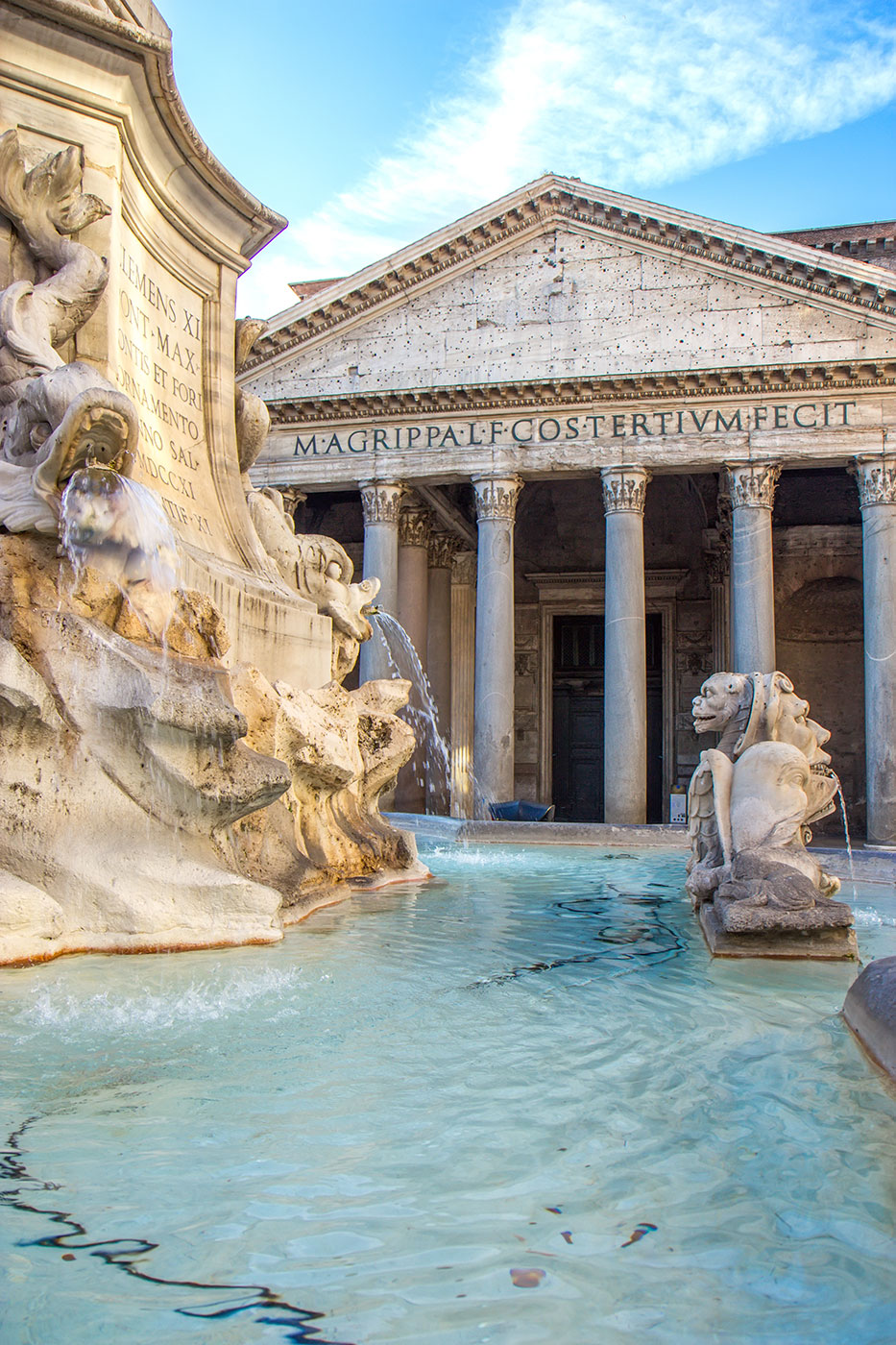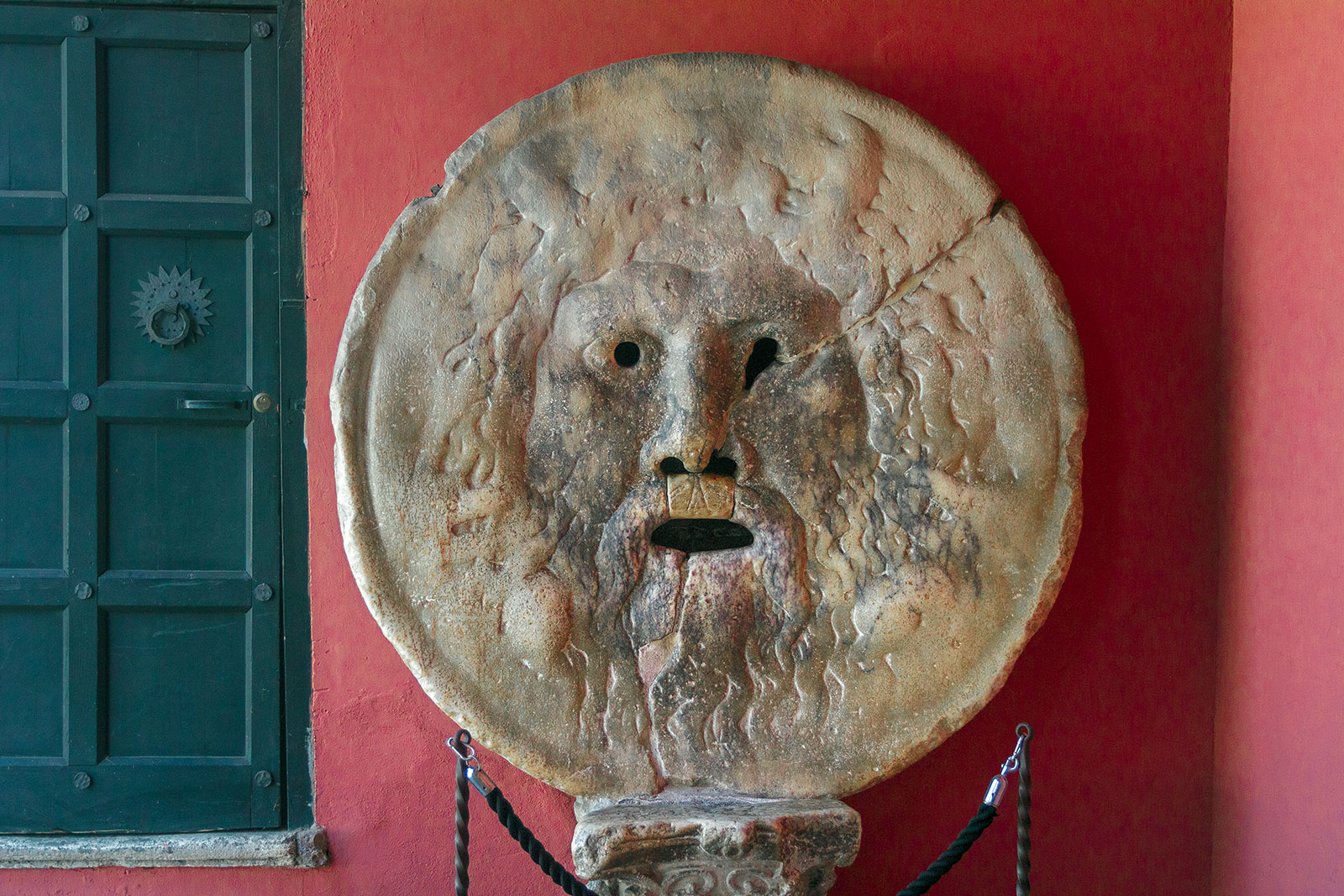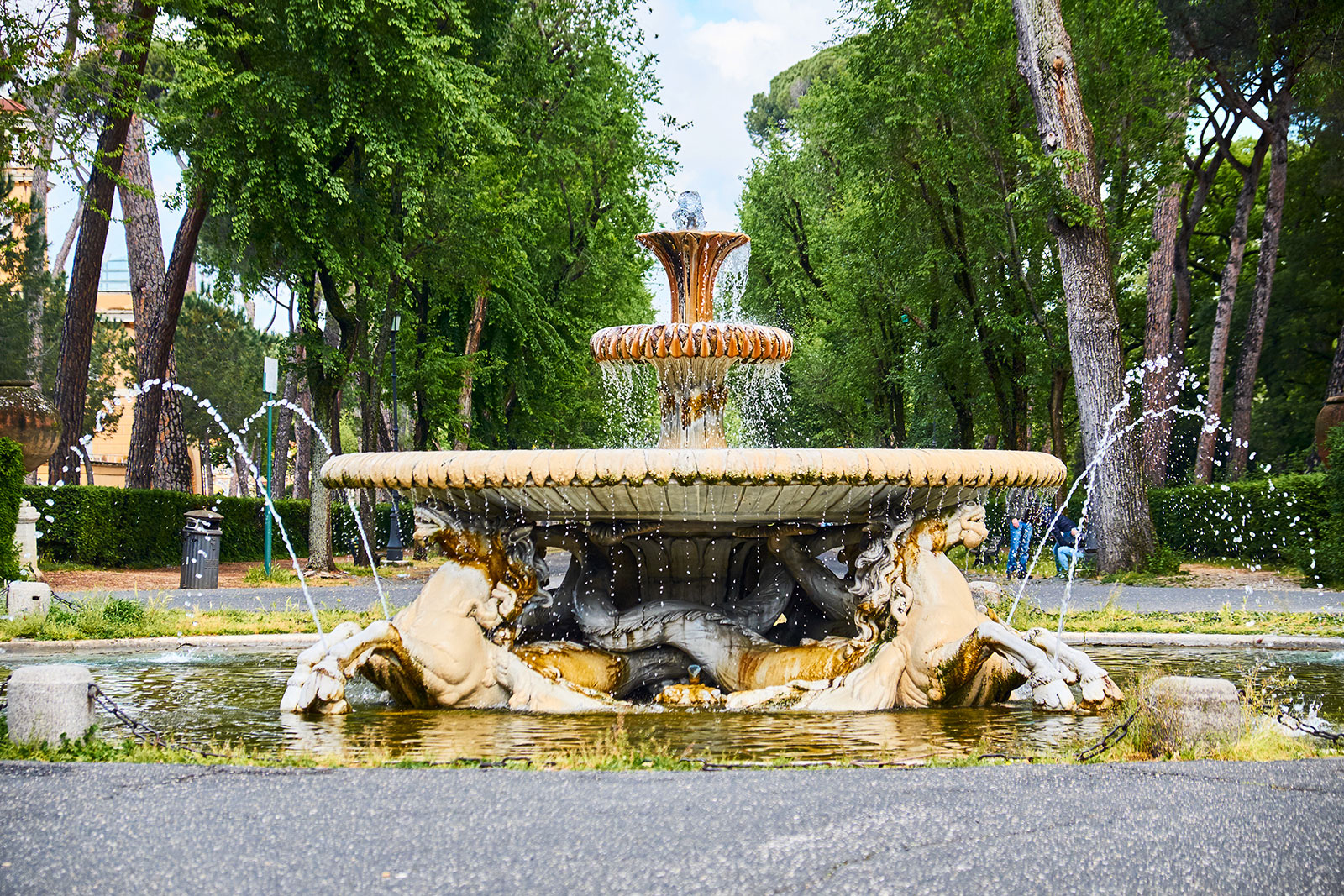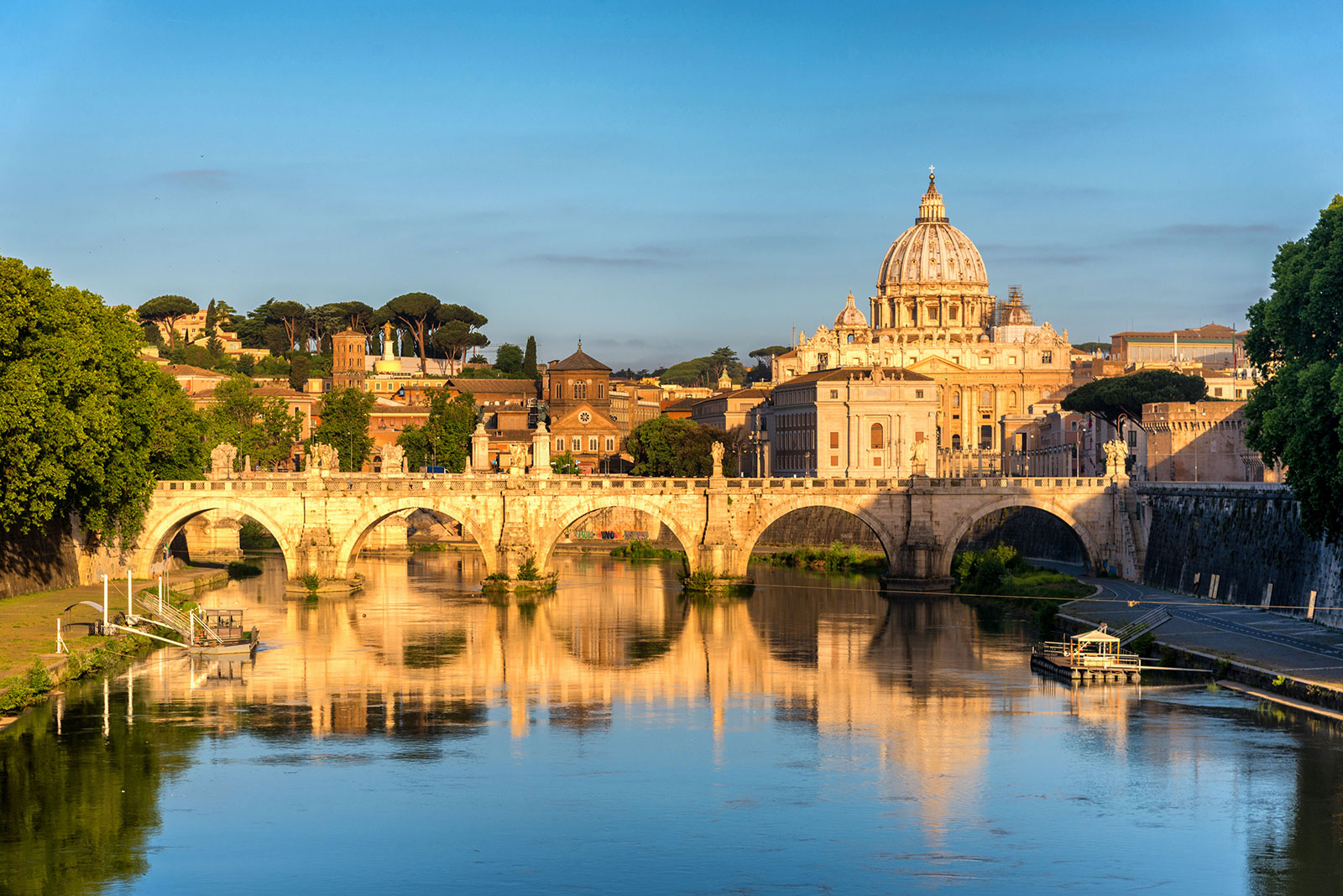
Free Things to Do in Rome
Work has been piling up, and you’ve had a headache for what seems like months. The weather isn’t great, your upstairs neighbor likes to rearrange his furniture on Sunday mornings, and you have just had it. You need a break, presto. It logically follows that you decide to take a trip and what better place to go to than Rome? Nothing puts la dolce back into vita like a trip to the old boot.
Life is a joy, in Italy; it takes you back to a simpler time, a better time. The weather is as amazing as the food, the people are nice, and problems get swept under the proverbial rug. Just what the doctor ordered!
You’re about to leave for your adventure in the Italian capital, and no one is going to stop you. You can smell the coffee, see the gorgeous clothes, and hear the jittery Italian mandolin music. Hold it right there: the tarantella, or what you think of as the music of chequered tablecloths and wicker Chianti bottles is typically Neapolitan and is not heard anywhere near Rome.
Either way, you’re excited, and that’s meraviglioso! But there’s one problem: the eternal city is famous for being eternally full and eternally expensive. So this time, when in Rome, don’t do as the tourists do, and try one of the things on this list instead. They are completely free and entirely priceless. Better yet, do them all, they won’t set you back a penny.
1. Bocca della Verita
Often skipped over in the guidebooks but known by one and all, the Bocca della Verita is worth a risky visit! If you’ve ever been to an amusement park, you’ve seen a version of this, the “mouth of truth.” Usually stationed at the queue of roller coasters to entice daredevils while they wait, the modern reinterpretation has you put a coin in and lay your hand into the man’s mouth to be given a little paper with insipid advice a la fortune cookie. While that is all well and nice, Roman legend has it that the real Bocca della Verita may actually bite off the fingers of those who dare to lay their hands into his mouth and tell a lie. Everyone who has had the pleasure of having a Roman grandmother – although in reality, it is, of course, the nonna romana who possesses you – will have been threatened with a visit to the stone-faced judge at the slightest hint of a fib. This time on your Roman Holiday, find out if your lover is true by heading to the ancient cattle market and finding the ancient face carved into a disk. Better have your stories straight before you place your hand into the stone mouth, just in case. The good news is that the possibility of losing your fingers comes at no monetary cost.
2. Canova Tadolini
A restaurant like no other, this eatery is set in the workshop of two lauded sculptors and rumored lovers. Antonio Canova, the famous neoclassical artist, helped his most beloved disciple, Adamo Tadolini, set up this studio, which functions as a museum and restaurant today. Monolithic men made of the finest marble watch over you as you wander the halls, and rows of studies of body parts fill every nook and cranny. Time hasn’t moved in here since the sculptors last laid down their chisels, and the Museo Canova-Tadolini is waiting for you to discover it. The staff at the restaurant will be glad to show you around even if you don’t eat anything, but we recommend sipping a glass of wine seated among these marvelous works of art. Wine is all you should probably have, though: the chef is known to be molto heavy-handed with the salt. There is something magical about sitting among the statues or even out by the sidewalk table on one of the city’s busiest roads by day, curiously empty at night.
3. Michelangelo’s Moses
Since you’ll be in town, go and visit Moses. You will find him sitting tall on his marble throne, distractedly fondling his beard with one hand and clutching the tablet with ten famous commandments in the other. The stone version of the biblical patriarch has famously captivated many, such as celebrated Austrian shrink Sigmund Freud, who penned one of his more famous essays on the statue. Now, you can add your name to the illustrious list of those having come to marvel at Moses in the church of San Pietro in Vincoli. It is impossible even for the flagrant philistine to deny the objective beauty of the statue’s pale arms or the gentle folds of his garb. Since Michelangelo put him there, the statue has been the subject of much debate and contention, due in no small part to the peculiar horns with which his creator has adorned him. What the sculptor intended with those is anyone’s guess, but what is fact is that this is one of the greatest statues in this world and well worth a free visit – or two.
4. Ossario at Santa Maria della Concezione dei Cappuccini
This is not for the faint of heart, we must warn you. The ossario, or ossuary, or “room full of bones” in this small church is something that is bound to visit your dreams long after you’ve left Rome. The church, covered wall to wall in skulls and bones of the deceased clergy bears a dictum above its entrance reading: “Quello che voi siete noi eravamo; quello che noi siamo voi sarete,” which translates to “what you are we were, and what we are you will be.” While this ominous statement may not be a charming message at first (or second) glance, it is certainly a poignant reminder of the racing of the cosmic clock and ought to make you appreciate your time on Earth a bit more. So enjoy life, for it is brief, but all the more beautiful for it. Have some wine and don’t worry about swirling it in the glass this way and that or sniffing for notes of walnut – just take a swig and take another, for at least in Italy there is always more wine.
5. Parco di Villa Borghese
Find a delicatessen and grab some bread, cheese, and meats to take to a picnic in the park – the gardens of the Villa Borghese are ideal for this purpose and a very popular spot with the locals.
A lush garden dotted with sculptures, fountains, and lakes, it is an oasis of tranquillity in the buzzing capital. Try and spot the parakeets who have settled in the park due to some mix-up nature has had a few years ago, take a walk in the romantic, green setting or visit one of the villas on the grounds.
Italians may not be as excited about park life as, say, the English, but the Parco di Villa Borghese brings even the biggest homebodies out when the sun shines. Come early in the morning if you can stand getting up, or arrive around sunset for an aperitivo al fresco.
6. Open Air Cinemas
The summer months, less crowded and more sweltering, see the temporary blooming of open-air cinemas all over Rome, most of which are free. These are put here for the poor Romans who, through some grave misfortune, have to stay in town for the summer and can’t run along to the beach like the vast majority of the residents of the Italian capital. So, if you find yourself there with them, why not sit down in a park and see a film? Each of the cinemas has a theme, usually a different one each year so that you can take your pick. See a Woody Allen movie set in Rome or watch a cinecitta classic without understanding any of what is going on, not minding one bit because you’re sitting with the Romans under the Roman stars. Life could be worse, you’re thinking? Well, outdoor cinemas can quickly become your own personal hell if you forgo the mosquito repellent, so better make a note of that.
7. Rinascente
These two department stores in the center of Rome belong to a chain of the oldest such establishments in Italy, the first one dating back to 1865. Rinascente, meaning reborn, may have changed locations, names (it dropped the “La” from its name a few years ago), and owners throughout the years, but it has remained synonymous with luxury and all things fine in Italy through it all. Nothing, absolutely nothing in this glitzy, ritzy department store comes free, or even cheap, but looking certainly costs nothing. And Rinascente is worth a look, housing the very best of Italian fashion, cosmetics, design, and edibles on over six floors. Make your way up towards the restaurants on the top level slowly, turning everything in your hands and stopping to consider how hard it must be to sew a seam into such ethereally thin, fine silk by hand. Forget your troubles for a while between rows and rows of calfskin bags in vibrant blues with contrast stitching, organza blouses, and leather loafers lined up in perfect order – all presented by impeccably dressed, soft-spoken salespeople who know better than to be pushy. Trying things on can’t hurt, can it? So put on that lovely jacket and daydream about what would happen if they accidentally left you in here overnight.
8. Pantheon
There is something captivating about the Pantheon, making all the chattering tourists stop talking instantly as they pass through its gates. Perhaps it is the fact that almost two thousand years after its construction, the dome is still the largest unenforced concrete dome in the world, which is a fact that even if you don’t know, you can kind of feel. This may sound strange, but just you wait until you see it for yourself. Either way, the Pantheon is a thing of absolute beauty, and the air inside it is heavy with history and importance. As it towers over you, glorious and unreasonable, you will be floored by it without being able to put your finger on what it is exactly that just gets your goat about the ancient Roman temple. Good thing you’ve got all the time in the world to while away and ponder because looking costs nothing. When it really could, if we’re being honest.
9. St. Peter’s Basilica
Speaking of largest things, why not pay a visit to the largest church in the world, St. Peter’s Basilica? According to Catholic tradition, the church is the burial site of St. Peter the apostle and is free to visit. Just don’t go when the pope goes, we hear it gets crowded. It is easy to forget in fun, fast, frivolous Italy that it houses the seat of the Catholic church, the Vatican. But all you need to do to be right back at the Sunday school of your childhood is to go stand on St. Peter’s square and watch the nuns inhabit an amble past, hear the bells ring, and see the faithful pilgrims fill the churches in the walled nation. For Vatican City is a nation. It is the smallest nation in the world, in fact, barely an eighth the size of New York’s Central Park. It is a monarchy, of sorts, governed by the pope, and has its own flag, anthem, and even mints its own money. For all the fun you can have in Rome, the Vatican can be a somber counterpoint, and make the most pious among the folk look at their shoes meekly. If you have yet to inherit the earth, you can still take your pick of places in the Vatican to visit for nothing: St. Peter’s is far from the only church around the small but mighty town.
10. Lungo il Tevere
Now for something completely different: Lungo il Tevere means “along the Tiber,” and it is the name of an annual summer festival stretched over the riverbanks between the bridges Sublicio and Sisto, June through September. Go take a walk along the river, melt into the crowd and pretend you live around the corner somewhere. The festival has everything a fun fair should: games where you can win clumsy, outsized teddy bears or stalls of local breweries; people selling their handmade jewelry and wood carvings; posters of Italian classics like the Vespa or Sofia Loren; booths offering panini (which is the plural – if you buy one, you’ll be eating a panino), sausages, and cotton candy; and a dubious man offering a prize of expensive prosecco if you can shoot a billiard ball between two bottles of it (you can’t, no one can – the guy who is sometimes seen winning is in on the scam). Have a bit more wine than you should, walk back home a little too late, and tell us you can’t hear Paolo Conte singing it’s wonderful, it’s wonderful.
11. Trevi Fountain
The perhaps most Roman thing to do is also, incidentally, free. So, make like Anita Ekberg and sneak out late at night to the Trevi Fountain. Marvel at the masses of water crashing noisily down before you, the only sound you can hear, the fountain lit up for no one but yourself. Well, yourself and the guards; so, don’t take a dip in the fountain, because you will get into trouble unlike Ekberg did in Fellini’s great but frankly unrealistic La Dolce Vita. Do, however, throw in a few of the coins you saved not paying for any of the above activities, because the money at the bottom of the fountain is collected daily by Christian charity Caritas and given to those in need, resulting in a collection of around 3,000 Euros each day. Feels nice to do your bit to help while also promising to return, doesn’t it? Not everyone feels this way, with some preferring to take instead of giving. The most famous Trevi coin thief, nicknamed d’Artagnan, stole from the fountain for a whopping 34 years before getting caught, the security getting beefed up as a result of this.
+1 - 1st Sunday of the Month
If you are the museum-going type but don’t want to pay the hefty entrance fees, fear not: simply structure your visit around the first Sunday of the month, when all state-run museums are free, as are all government funded galleries, parks, gardens, and archaeological sites. This, of course, means more crowds than usual, if that is even possible – but the 100 percent discount may well be worth it.
So you see, Rome does not have to be expensive, provided you can live like a local and do the things they do. That, of course, is the secret to any perfect holiday and the way to forget about your real life back home, for however short a time. The lucky thing is that you can always return to Rome – they don’t call it the eternal city for nothing.


